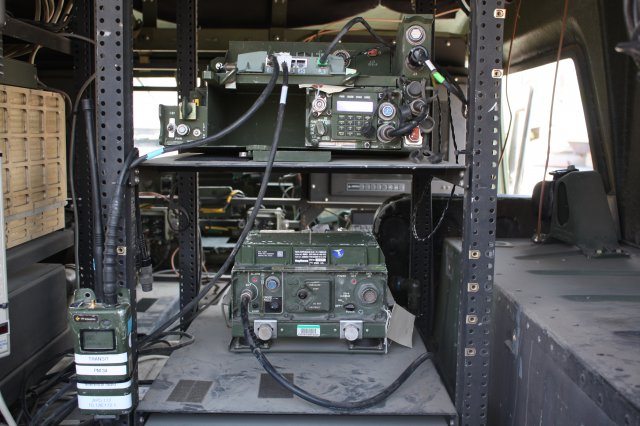The U.S. Army announced it has completed field testing for radio-based combat identification capabilities, which it expects to field next year as part of Capability Set 14.
Product Manager Network Systems and the U.S. Army Research, Development & Engineering Command’s communications-electronics RD&E center, or CERDEC, concluded three and a half years of work this summer at Fort Dix, N.J., that will save taxpayer dollars by leveraging and updating software embedded in the pervasively fielded Single Channel Ground and Airborne Radio System, or SINCGARS.
Universal Network Situational Awareness, or UNSA, runs on multiple frequencies and will provide additional flexibility. With embedded or attached GPS, it’s able to send situational awareness data to Force XXI Battle Command Brigade and Below — or FBCB2 — and any other mounted or dismounted RBCI-capable SINCGARS within radio frequency range, regardless of the voice net being used.
This capability has been jointly developed in close coordination between FBCB2 and PdM NS to meet a Threshold Requirement in the Joint Battlefield Command Platform Capability Development Document for a Beacon solution.
UNSA allows radios to communicate with each other directly, regardless of voice net, thus allowing all SINCGARS radios to act as beacons, providing greater situational awareness to FBCB2. Designed to work on the Advanced System Improvement Program platforms, UNSA will be an important component in RBCI efforts to reduce air-to-ground fratricide, said John Wentworth, PdM NS lead engineer for radio-based combat identification.
“If there’s a convoy rolling through your area and you didn’t know about it, these guys would be able to send you their position automatically before you tried to engage them. Some convoys don’t have the ability to beacon now, but all of them have radios. So once this software goes out there, they will have this ability,” Wentworth said.
Recapitalizing on legacy radio systems in theater will save the Army money without adding to space, weight and power challenges.
“There are more than 386,000 ASIP SINCGARS fielded, which means you’ll be able to field 386,000 beacons. And because it’s a software upgrade only, you’ll save $10,000 with each radio upgrade. You don’t have to install new hardware or train folks how to operate it; you don’t have to take eight pounds of ammo off a vehicle or make a dismount with a 110-pound pack or have to carry 150 pounds. You get this for free in both cost and weight. And it really helps us get this capability to the Warfighter as fast as we can,” Wentworth said.
The work, which was performed at CERDEC’s integrated C4ISR capabilities testbed, prepared PdM NS for Network Integration Evaluation 12.2, allowing insight to the capacity of the universal network, the number of beacons that could be used and how best to install the software.
“It also gave us an idea about the amount of support we’d need to install the capability at NIE, and what legacy functions of the SINCGARS did or did not work at that time, which we would have needed to inform the users at NIE. It went well and the feedback at NIE was positive; we plan to participate in 13.1,” Wentworth said.
Product Director Command, Control, Communications, Computers, Intelligence, Surveillance, Reconnaissance and Network Modernization — which operates the testbed at Fort Dix — is an R&D program within RDECOM CERDEC. It focuses on the future network, near term and several years out, providing the Army with a relevant venue to assess next generation technologies and to facilitate technology maturation.
The program is also a key component in CERDEC’s support of the agile acquisition process, utilizing its field lab environment to perform risk mitigation and candidate assessment/selection for future Network Integration Rehearsal/Exercise events.
“What is the definitive data that allows maturation to happen? It’s taking a look at a capability, the gap, what technologies you have to fill that gap and how best to tweak that technology as you move forward. But you have to build an environment so you can get at those gold nuggets on the front end of the development cycle. We’re helping technology providers take a pulse check of where their technology is and then helping them shape it so it can work in the future network,” said Product Director Lt. Col. Quentin L. Smith, PD C4ISR & Network Modernization.
“Part of this expertise involves looking at current and legacy systems, seeing what is not being used in those technologies that can potentially fill a gap and helping to flush out those capabilities. We’ve got legacy systems in which the Army’s invested and we have future force waveforms, such SRW and ANW2, coming down the pike. So it’s a good thing for the Army whenever we can teach old dogs new tricks,” Smith said.
PdM NS is scheduled to deliver the software to Project Manager FBCB2. If certified and approved by the National Security Agency, the software upgrade would be available for all RBCI Capable SINCGARS radios within a year.










